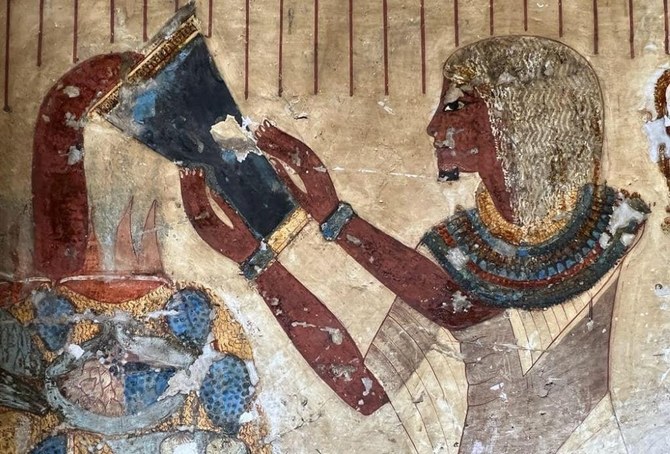
Mostafa Waziry inaugurated the tomb in the Al-Khokha area on Luxor’s West Bank following completion of restoration by an Argentine mission affiliated to the University of Buenos Aires
Neferhotep was one of the senior statesmen of his time, holding several titles including the scribe of Amun
CAIRO: Egypt has opened the restored tomb of Neferhotep, the scribe of Amun, as a new Luxor tourist attraction.
Dating back to the 18th Dynasty of 1550 to 1292 B.C. during the era of king Ay (1327 to 1323 B.C.), the burial chamber has taken more than two decades of painstaking work to return to its former condition.
Mostafa Waziry, secretary-general of Egypt’s Supreme Council of Antiquities, inaugurated the tomb in the Al-Khokha area on Luxor’s West Bank following completion of restoration by an Argentine mission affiliated to the University of Buenos Aires and headed by Violeta Pereyra under the council’s supervision.
The opening ceremony was also attended by Argentina’s envoy to Cairo and other representatives of the South American country.
Waziry noted that the tomb added an important new tourist destination to the attractions of the western mainland in Luxor with its array of detailed and colorful painted scenes and inscriptions.
Mohammed Abdel-Badie, head of the Central Administration for the Antiquities of Upper Egypt, said Neferhotep was one of the senior statesmen of his time, holding several titles including the scribe of Amun.
He noted that the importance of the tomb lay in its views and inscriptions, which illustrated the changes in funerary practices that occurred after the Amarna period of religious change, that saw the capital move from the north of Egypt to the south.
It also contains a statue of the owner of the cemetery and his wife, Meritamun, who was a vocalist for the god Amun.
Fathi Yassin, director general of antiquities in Upper Egypt, said that the tomb restoration and maintenance project began in 2000.
Experts from the University of Buenos Aires recorded and studied the texts in the tomb before starting their work. Actual restoration work began in 2013, when a German archaeological team cleaned wall paintings in the tomb, and mended damaged stonework and layers of color on inscriptions.
Yassin pointed out that the architectural structure of the lower burial chambers of the tomb was designed on a longitudinal axis and arranged east to west, evoking the regeneration of the deceased and the sun’s daily trajectory.
Fragile surfaces were cleaned using laser technology, restoring clarity to the wall paintings and hieroglyphics.
Pereyra thanked the Egyptian council for its cooperation during the restoration period.
In a statement, Egypt’s Ministry of Tourism and Antiquities said: “This inauguration marks the addition of a new and important tourist destination to Luxor’s West Bank monuments, amidst the significant influx of tourists during the winter tourism season.
“Featuring a multitude of beautifully painted scenes and inscriptions, the tomb offers visitors a captivating and detailed glimpse into ancient Egyptian history.”












